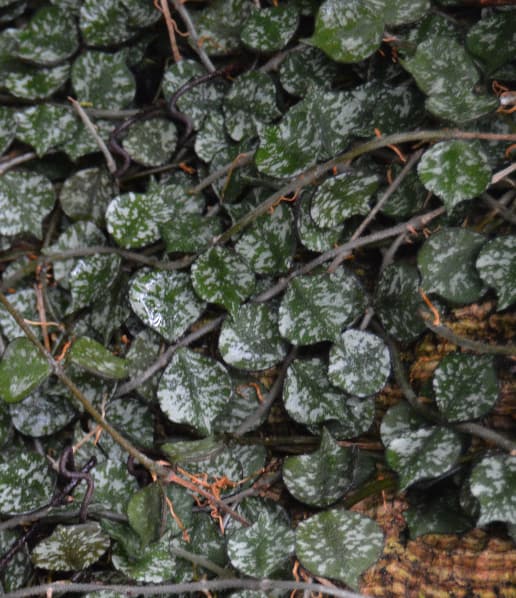The “Hoya” plants are a type of climbing plant native to East Asia and Australia that grow up to 6 meters.
It’s known by the names of Porcelain Flower, Hoya, and Fung Wax Flower.
The leaves are oval or elliptical, and measure 3 to 5 cm wide by 3.5 to 13 cm long.
Undoubtedly its flowers are what attract the most attention and are grouped into umbel-shaped inflorescences and aromatic.
Each of the flowers is white or pink, measuring 1.5 to 2 cm in diameter and made up of five petals.
Hoya curtisii is a great plant that you can have inside your home for many years, and even if you live in an area with a mild climate, you can enjoy the beauty of its delicate petals in a corner protected from the sun.
The leaves of this plant are two shades of green, one being lighter than the other.
They are mainly used as houseplants to decorate corners and galleries.
In warm climates, they can be grown outdoors.
You may like: Echeveria Cubic Frost
Hoya curtisii ‘Fung Wax Flower’ Care
The hoya curtisii is easy to care for just follow this instruction:
Substrate:
It must have a soil that drains well, for example, black peat with 50% perlite.
Another ideal soil would be one made up of a mixture of heather soil and leaves.
Sand offers good drainage and allows oxygenation of the roots.
Gravel ideal for placing in the base of pots to improve drainage.
Arlite these are heat-expanded clay balls that offer good drainage and oxygenation (they are veneers).
Perlite this is an ideal ingredient to add oxygenation and drainage to any Substrate.
Volcanic rocks improve drainage and oxygenation of the roots.
Watering:
These succulents can survive long periods without water because their fleshy flowers always have a water supply that helps them last longer without being watered.
Therefore, it is necessary to wait for the substrate to dry before re-watering.
During the summer, it should be watered 2 to 3 times a week, while the rest of the year 1 watering every 7 to 10 days will suffice.
Temperature:
The hoya curtisii does not resist cold, so it cannot be at temperatures below 10ºC/50°F. Warm environments are the best for cultivation.
The highest temperature it can resist is 27°C/80°F.
Illumination:
Hoya curtisii needs a well-lit exposure, but without direct sunlight.
The ideal is to have it indoors, in a room with lots of light. If you live in an area with warm weather, you can have it outside, in semi-shade.
Diseases:
It is a very resistant plant; however, it can be affected by:
Aphids: they are parasites of about 0.5cm in green, yellow or brown depending on the variety.
Fortunately, they can be kept in check with yellow color traps with neem oil.
Mealybugs: they can be of the cottony type (cottony mealybug) or remember the appearance of a limpet or shield (California louse).
They also adhere to any part of the plant, but they can be easily removed by cleaning the Wax Flower with a brush moistened in pharmacy alcohol.
Plantation or transplant:
It is transplanted only when the pot is too small to contain the plant using a good fertile substrate mixed with coarse sand to favor water drainage.
Propagation:
The hoya curtisii can be multiplied by cuttings. Let’s see how to proceed:
In spring, you will cut a stems from the ends that have 2 or 3 knots, cutting below one of them.
Knots are the bumps from which the leaves sprout.
Those on the base must be removed.
Next, you will impregnate the base with powdered rooting hormones.
Plant it in a pot with peat and perlite mixed in equal parts, and water.
Finally, you will take a transparent plastic bottle to which you will have cut the bottom, and will cover the pot with it.
In order for everything to go well, it is important to remove the cap from time to time so that the air is renewed, which will prevent fungi from appearing.
In 14 to 22 days, the cutting will become a new plant.
Pruning:
It does not require pruning.
Fertilizer:
Between spring and summer, use liquid fertilizer for succulents.
You must read the product label and follow the specified instructions to avoid the risk of overdose.

1 thought on “Hoya curtisii ‘Fung Wax Flower’”
Comments are closed.